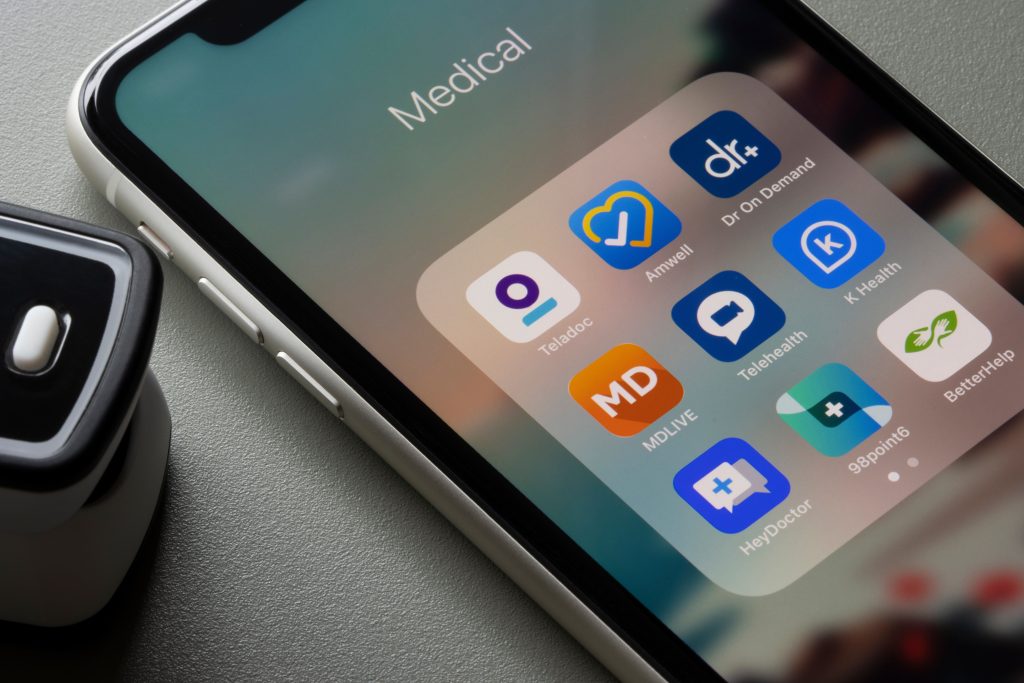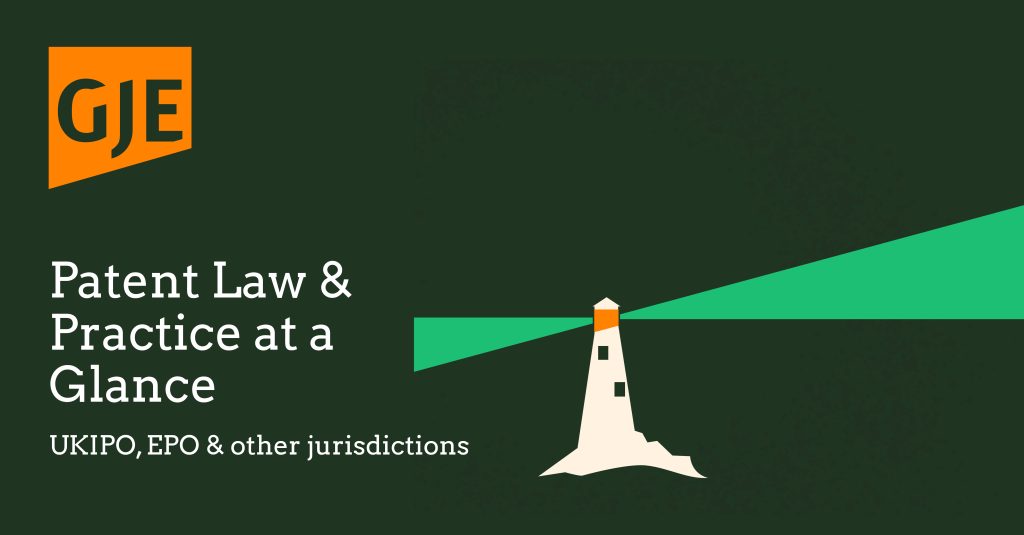
Artificial intelligence (AI) is revolutionising the healthcare industry by enhancing our ability to accurately diagnose diseases and predict patient risk factors, and accelerating drug discovery and development.
Predictive AI models can be trained using vast amounts of historical medical data to make accurate predictions and estimations that can be helpful for a variety of healthcare-related tasks. For example, by training an AI model on historical medical images associated with certain diseases, the AI model can be used to analyse a medical image of a patient to predict whether that patient has a disease. Current models can predict the presence of a disease with high precision and can identify abnormalities that might otherwise have been missed by human eyes.
The rapid evolution of AI technologies in healthcare brings exciting opportunities for securing intellectual property. While patent protection for AI-driven innovations can involve navigating complex legal and technical considerations, these challenges may be addressed through strategic drafting and a full understanding of the nuances of the current patentability frameworks. This article explores the promising landscape of patent-eligible subject matter within the domain of AI healthcare in Europe.
Patentability requirements
In the context of innovations relating to the use of AI in healthcare, there are some hurdles to consider when it comes to patent eligibility. Below we provide a broad overview of some of these hurdles.
Mathematical methods/programs for computers
At the European Patent Office (EPO), AI and machine learning models are generally considered to be of an abstract mathematical nature and are thus considered mathematical methods. Mathematical methods and programs for computers “as such” are specifically excluded from patentability at the EPO. The EPO’s approach when considering these types of inventions is to determine whether the invention has technical character. For AI inventions, technical character can be demonstrated by limiting an AI claim to a “technical application”, where the claim is functionally limited to a specific technical purpose, or to a “technical implementation”, where the claim is directed to a specific technical implementation. Once it has been established that the invention has technical character, all features that contribute to the technical character are considered for the assessment of inventive step.
With AI healthcare innovations, functionally limiting the claim to a technical application is the most common way to demonstrate technical character.
The EPO have provided some helpful guidelines on what can be considered a technical application of machine learning algorithms. These guidelines provide an example in which the use of a neural network in a heart monitoring apparatus, for the purpose of identifying irregular heartbeats, makes a technical contribution. In a related example, European patent application EP 0850016 claims an apparatus and method where an electrocardiograph signal is processed and used in a Kohonen neural network to obtain an indication relating to the occurrence of a distinctive irregular heartbeat. EP 0850016 was the subject of an appeal decision (T 0598/07) following revocation as a result of opposition proceedings. In T 0598/07, it was found that the points of novelty were (1) an n dimensional vector representative of each pulse is first compared with an irregular heartbeat n dimensional volume to identify distinctive irregular beats, which are spurious with regard to monitoring heart conditions, and subsequently with a regular heartbeat n dimensional volume; and (2) data processing is carried out by Kohonen neural network means. These differences appear to be mathematical in nature but were considered to contribute to the technical character due to the technical purpose of identifying irregular heartbeats.
While following the EPO guidelines can be helpful in indicating the type of technical application that can confer technical character, care must be taken to ensure that a patent application is drafted to sufficiently demonstrate the link between ML steps and the technical output (e.g., diagnosis). It is not always sufficient for a patent application to be related to a technical application, such as AI for diagnosis, as demonstrated in T 1741/22 for EP patent application EP 3203396. The subject matter of EP 3203396 relates to a system and method for analysing glucose monitoring data indicative of a glucose level. The method includes receiving glucose monitoring data indicating a glucose level sampled for a person at sample times and comprising glucose profiles comprising glucose values assigned to the sample times. For each of these glucose profiles, maximum or minimum glucose values are determined and displayed. EP 3203396 was initially rejected due to a lack of inventive step and was subsequently appealed. The applicant argued that the steps of determining and displaying minimum/maximum glucose values were novel and provided the technical effect of “improved analysis of glucose monitoring data”, emphasising that the technical effect did not lie in a mere “presentation of information” but that “new data was generated”. The Board did not agree that this “new data” was sufficient to contribute to the technical character of the invention. Thus, despite EP 3203396 relating to a real-world measurement, it appears that some further technical step was required to confer technical character to the method.
Therefore, it is apparent that careful consideration is required to identify aspects of an AI in healthcare innovation that are patent-eligible.
Methods of diagnosis
The EPO excludes diagnostic methods practised on the human or animal body from patentability to prevent medical or veterinary practitioners from being concerned about patent infringement when diagnosing a patient. The EPO has provided guidance that to be considered a diagnostic method, the following steps must be included: (1) an examination phase, involving the collection of data; (2) the comparison of these data with standard values; (3) the finding of any significant deviation (i.e. a symptom) during the comparison; and (4) the attribution of the deviation to a particular clinical picture.
Furthermore, a method is only regarded as a diagnostic method within the meaning of Art. 53(c), and thus excluded from patentability, if the examination phase of step (1) is practised on the human/animal body. In the context of AI or ML methods, the key inventive steps carried out typically occur away from the human or animal body. For example, a method for providing a medical diagnosis using AI might start with the step of inputting medical data (e.g., medical images) to the AI model, thereby skipping the examination phase. Additionally, this exclusion applies to method claims, and such claims to a medical device or computer program product that performs the method are not excluded.
Interestingly, this exclusion was also considered in T 0598/07 (relating to the use of a neural network in a heart monitoring apparatus for the purpose of identifying irregular heartbeats). In T 0598/07, the Board were satisfied that the method claims did not fall under this exclusion because none of the method claims included steps “relating to the diagnosis for curative purposes stricto sensu representing the deductive medical or veterinary decision phase”. The Board went on to provide further insight, stating that the independent method claim “merely provides an indication as to whether the n dimensional vector formed from a regular heartbeat is within or outside the regular heartbeat n dimensional volume” and that the method could “be used to activate an alarm in response to the output indication”. Thus, it appears that providing an indication may not be considered to fall within the final step (4), the attribution of the deviation to a particular clinical picture.
Therefore, for innovations relating to the diagnosis of a human or animal, care should be taken to ensure that at least one diagnostic method step is not claimed as part of a method claim.
Sufficiency
European patent law requires that inventions be capable of implementation by the skilled person without undue burden. In the context of AI inventions, insufficient disclosure can be found if “the mathematical methods and the training datasets are disclosed in insufficient detail to reproduce the technical effect over the whole range claimed. Such a lack of detail may result in a disclosure that is more like an invitation to a research programme” (section F-III-3 of the EPO Guidelines). For example, according to section G-II-3.3.1 of the EPO Guidelines, “if the technical effect produced by an AI invention is dependent on particular characteristics of the training dataset used, those characteristics that are required to reproduce the technical effect must be disclosed unless the skilled person can determine them without undue burden using common general knowledge. However, in general, there is no need to disclose the specific training dataset itself.”
T 1191/19 covered one such example that faced this sufficiency requirement issue. The European patent application in question was EP 2351523, titled “Method and System to Safely Guide Interventions in Procedures the Substrate Whereof is Neuronal Plasticity.” This application involves using neural networks to guide medical interventions aimed at enhancing neuronal plasticity. The system processes and analyses data from patients undergoing neurorehabilitation using artificial neural networks (ANNs). It is likely that the characteristics of the training dataset used to train the ANNs significantly contributed to the technical effect produced by this invention. These characteristics would likely require the inclusion of features and patterns specifically related to neuronal plasticity mechanisms. For example, data reflecting neural reorganisation after injury or the brain’s response to various types of neuromodulations would be crucial for guiding interventions accurately.
The patent application was initially rejected due to clarity and inventive step issues. The applicant appealed, and the Board of Appeal then questioned the sufficiency of disclosure in their preliminary opinion: “More crucially, it appears that the application does not disclose the invention in a manner sufficiently clear and complete for it to be carried out by the person skilled in the art. In particular, the application does not disclose any data set for use as ‘training data’ and for use as ‘validation data’. Not even does the application disclose the minimum number of patients from which training data should be compiled to be able to give a meaningful prediction and the exact set of relevant parameters… Under these circumstances, the skilled person cannot reproduce without undue burden the application of the metalearning scheme… The available disclosure seems to be more like an invitation to a research programme.”
This decision demonstrates the importance of providing sufficient information in the description to show characteristics of a dataset required to produce the technical effect of an AI invention. In this T decision, the Board of Appeal provided some indications of what type of disclosure might be considered adequate for meeting this sufficiency requirement. That is, the Board of Appeal indicated that providing “any data set for use as ‘training data’ and for use as ‘validation data’” and “the minimum number of patients from which training data should be compiled to be able to give a meaningful prediction and the exact set of relevant parameters” may have been adequate. Of course, while this may have been adequate in this patent application, it is important to consider this on a case-by-case basis.
Conclusion
From the above, there are many considerations to account for when attempting to gain European patent protection for an AI in healthcare innovation, particularly concerning the patentability requirements under European patent law. Ensuring that your patent application provides enough information to avoid exclusion is paramount in achieving patent protection.
If you would like to discuss the contents of this article or have any queries on patent protection in AI or digital health tech more generally, please email us at gje@gje.com.


